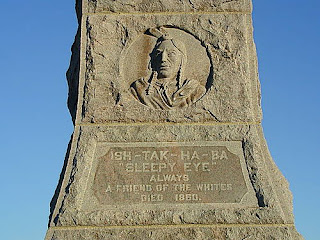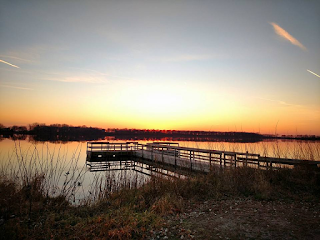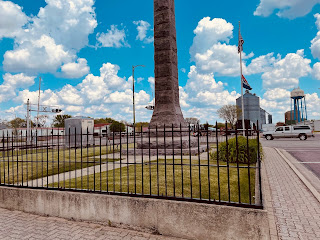The general purpose of this Society shall be the discovery, preservation, and dissemination of historical knowledge about the City of Sleepy Eye and the County of Brown, as it is related to the City of Sleepy Eye.
Wednesday, December 1, 2021
Saturday, July 17, 2021
Charles Glotzbach Declared Dead by Navy Department
Charles Glotzbach Declared Dead by Navy Department
Charles George Glotzbach was born on May 15, 1920 at Sleepy Eye, Minn., to George J. Glotzbach, Jr. and Anne Hillesheim Glotzbach. He was baptized May 20, 1920 by Rev. James Klien at St. Mary's Catholic Church. Sponsors were Dolores and Edwin Laue. He was confirmed at St. Anne's in Santa Ana, California, on May 27th, 1934 by the Most reverend John J. Cantwell.
In January, Donald 1928 and he moved to Santa Ana, Calif. with his mother and brothers Donald and John. He attended several grade schools, and on Sept. 1, 1934 entered St. Anthony's Seminary & College at Santa Barbra, Calif. He completed four years of study and graduated on June 4, 1938. After several years at Santa Ana College and the University of Notre Dame at South Bend, Indiana, he was employed by Southern California Edison Company until joining the United States Naval Reserve. He was appointed ensign on August 7, 1943, to rank from August 20.
On Sept. 3, 1943 Charles and Jane Harcoff were married in Santa Barbara, Calif. Jane was born Jan. 23, 1918 in Chicago, Ill., to Constantine Alexander Harcoff and Lyla, Marshall Harcoff.
On April 1, 1944 Charles completed the course of instruction in submarines at the U.S. Submarine School, US. Submarine Base, New London, Conn., and soon advanced to the rank of Lt. (jr. gr.). He served on the submarine U.S.S. Barbel, which was reported missing as of Feb. 18th, 1945. (Please see news clipping from the Sleepy Eye Herald-Dispatch of Match 7th, 1946)
Friday, July 16, 2021
The Birth of a Town of Sleepy Eye
The Birth of a Town of Sleepy Eye
How Do You Do' Where Is My Home? Sleepy Eye, Minnesota. You say I'm kidding you, there is no town by that name. Well, believe it or not, that's the eyebrow raising reception a Sleepy Eye Resident gets when traveling.
I never get tired of hearing of the beauty of the Sleepy Eye Area. As you come over the small hill east of town, you see nestled in the woods a beautiful lake, with two smaller takes on each side of them as far as the eye could see, the waving grass of the prairie broken only by small clumps of poplar trees.
In and around this area lived the Prairie Sioux or Dakota Indians. The Prairie Sioux were composed of small tribes roaming the Dakotas and Southern Minnesota. The tribe that we are interested in lived along the Minnesota Rive and was under the leadership of a chief called "Isk-Tak-Ha-Ba, meaning "Eyelid Drooping".
Here is an interesting Face to me. "Ish-Tak-Ha-Ba was born to a non chief family in 1780, and by Indian standards he couldn't become a chief, so what did they do, just like today, he went with a "Delegation to Washington!" and the Big White Chief President Monroe in 1824 Officially Declared Him A Chief! It was while he was in Washington that his picture was painted by an artist named Zimmerman, this picture is owned by the Minnesota Historical Society, but everyone in this area is family with and has seen copies of it on postcards, letterheads and trademarks such as the one we are all so familiar with.
About the time that Chief Sleepy Eye was in Washington another part of our history had its beginning in Canada. A French Canadian by the name of Alec Demerce had the wanderlust and drifted south into the Dakotas and Minnesota. The Sioux were friendly and agreeable so he hunted and trapped with them finally marrying an Indian girl and never returned to his home in Canada. Traveling with a roving bandof Sioux he settled down for awhile by what is now known as Sleepy Eye Lake. The Indian name for the lake was "Bedatasche" interpreted by some to mean "Big Wood Lake" and by others "Pretty Water With The Big Trees" it is assumed that Demerce was one of the first white man to see Sleepy Eye Lake.
By this time there were many forts and settlements in southern Minnesota and the white man was gradually taking over, the Indian was being driven out of his own county with little understanding or fairness. Chief Sleepy Eye was a good leader, he had most of his tribe under control and he was friendly with the whites at all times. He was very reluctant to sign the Treat of Traverse De Sioux in 1851. This treaty ceded (gave up) all the land in the area to the whites except for a strip ten miles on each side of the Minnesota River. This strip was called a "Reservation" and the Indian, like ourselves, did not like to be told where he could live. Only after receiving permission for his tribe to live in the Traverse De Sioux area near St. Peter did he sign the Treaty.
A short time after this, there was an Indian Massacre in Iowa (1857) and permission for Chief Sleepy Eye and his tribe to live off the reservation was revoked. He moved his family and tribe westwards and settled on the banks of Sleepy Eye Lake.
We know that Chief Sleepy Eye lived on the shores of Sleepy Eye Lake with his white friends until 1859 when he traveled to South Dakota to visit a friend Red Eagle, while he was there he was thrown from his horse and died of his injuries (Chief Sleepy Eye was 80 years old then.)
Chief Sleepy Eye was buried near Big Stone Lake, but in 1902, Chief Sleepy was allowed to be removed and was reburied in Sleepy Eye where today stands a fifty foot granite monument in his memory and his own cemetery is set aside for Chief Sleepy Eye.
After Chief Sleepy Eye's Death, the Indian village was abandoned, leaving a few Indians and "French Cap" and a trader names Ross, after which Ross Lake was named.
The Indians were becoming restless, they didn't like the idea of living on a reservation, and who would blame them? They had guns and ammunition and there was much talk of driving the white man out of their land.
In 1862, the year of the famous Indian Uprising, French Cap and Ross were tipped off by a friendly Indian squaw, that the Indians were on the rampage. Even if they were friends of the Indians, they knew of their lust for blood when incited, so French Cap took his family to New Ulm, the nearest settlement and Ross went into hiding along the Cottonwood, working his way to Mankato.
After the Indian fighting had died down, only French Cap came back to his home on the East short of Sleepy Eye Lake, Soon the Government surveyors arrived and Cap made his selection of a homestead, making him the first resident by government records.
From time to time a new settler arrived, built a house and sent for his family in 1872 the town site was platted. By 1875 there were Log schools, business places and a hotel and the village was incorporated under the name Sleepy Eye Lake. Just as today, there was dissatisfaction, they didn't like the name in fact, they were so dissatisfied that they went to the Legislative session in 1879 and had the town name changed to "Loreno", now as romantic as it may sound.... Others asked why that name.... what's that meaning.... there was none, it was just a plain name.... no historical meaning behind it... Soooooo, the citizens went back to the 1881 Legislative session and had the town renamed, "Sleepy Eye Lake". So basically for 2 years our town was named a different name other than what we know it today. To arrive at the name we have today, Finally in 1904 the town was chartered as "The City of Sleepy Eye" a name that has stood the test of whys and wherefores and jokesters.
That's the story of a birth of a town ..............
Wednesday, June 2, 2021
SEAHS Developing New Visitor Guidelines
Change Following New Guidance, Facility Use
In accordance with new guidance from the CDC and Minnesota
Governor Tim Walz, we have relaxed our mask requirement at the Sleepy Eye Area
Historical Society/Depot Museum. Masks will not be required in the museum, but
they will be encouraged. We also ask that museum visitors continue to
accommodate social distance requirements and gallery limits.
We will continue to review the most appropriate guidelines for
museum visitors as we near the end of the COVID-19 pandemic.
West Newton - Town and Township
West Newton –Town and Township I think this piece though not Brown County, is important enough to at least add here because so many ...

-
Chief Sleepy Eye Our Chief Sleepy Eye There is little written about Chief Sleepy Eye yet we know that, Ish-tak-ha-bah ...
-
West Newton –Town and Township I think this piece though not Brown County, is important enough to at least add here because so many ...
-
Have a Cigar! Here is more about early cigar makers. We know that in 1901 Sleepy Eye had at least four men ...








